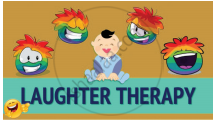Advertisements
Advertisements
Question
What was the reason for the anxiety of Paul's mother as he grew older?
Solution
As can be implied from the story, The Rocking-horse Winner, Paul was an autistic child who also suffered Oedipus-complex. The story pictures a very young Paul who is at the threshold of teenage and is very eager to fight the sounds that keep whispering in his house that “there must be more money He was desperate to bring happiness to his mother through money and desired to replace his father in her life. As Paul grew impatient and betted on racing horses to earn money by means of gambling. Hester realised that her son was indulging too much in horse racing and asked the gardener and her brother to keep him away from it. She realised how tensed Paul had grown. Yet she knew not that the worry that had been eating and consuming him up was of his mother. Eager to win, Paul lost and lost again. It was before Derby, he grew worried to earn for his mother and prove his luck to her. She was worried so much that she left the party in the middle to return to her son to see him safe and healthy. However, it was the last time she saw her son in senses.
APPEARS IN
RELATED QUESTIONS
What were Watson's observations on the stick left behind by Dr. Mortimer? How far did Sherlock Holmes prove him wrong? (in about 125 words)
Read the passage given below and answer the questions that follow:
The term dietary fibres refers collectively to indigestible carbohydrates present in plant foods. The importance of these dietary fibres came into the picture when it was observed that the people having diet rich in these fibres, had low incidence of coronary heart disease, irritable bowel syndrome, dental caries and gall stones.
The foodstuffs rich in these dietary fibres are cereals and grains, legumes, fruits with seeds, citrus fruits, carrots, cabbage, green leafy vegetables, apples, melons, peaches, pears etc.
These dietary fibres are not digested by the enzymes of the stomach and the small intestine whereas most of other carbohydrates like starch and sugar are digested and absorbed. The dietary fibres have the property of holding water and because of it, these get swollen and behave like a sponge as these pass through the gastrointestinal tract. The fibres add bulk to the diet and increase transit time in the gut. Some of these fibres may undergo fermentation in the colon.
In recent years, it has been considered essential to have some amount of fibres in the diet. Their beneficial effects lie in preventing coronary heart disease, and decreasing cholesterol level. The fibres like gums and pectin are reported to decrease postprandial (after meals) glucose level in blood. These types of dietary fibres are recommended for the management of certain types of diabetes. Recent studies have shown that the fenugreek (Methi) seeds, which contain 40 per cent gum, are effective in decreasing blood glucose and cholesterol levels as compared to other gum containing vegetables.
Some dietary fibres increase transit time and decrease the time of release of ingested food in colon. The diet having less fibres is associated with colon cancer and the dietary fibres may play a role in decreasing the risk of it.
The dietary fibres hold water so that stools are soft, bulky and readily eliminated. Therefore high fibre intake prevents or relieves constipation.
The fibres increase motility of the small intestine and the colon and by decreasing the transit time there is less time for exposure of the mucosa to harmful toxic substances. Therefore, there is a less desire to eat and the energy intake can be maintained within the range of requirement. This phenomenon helps in keeping a check on obesity. Another reason in helping to decrease obesity is that the high-fibre diets have somewhat lower coefficients of digestibility.
The dietary fibres may have some adverse effects on nutrition by binding some trace metals like calcium, magnesium, phosphorus, zinc and others and therefore preventing their proper absorption. This may pose a possibility of nutritional deficiency especially when diets contain marginal levels of mineral elements. This may become important constraints on increasing dietary fibres. It is suggested that an intake of 40 grams dietary fibres per day is desirable.
(Extracted from ‘The Tribune’)
(a) On the basis of your reading of the above passage make notes on it in points only, using recognizable abbreviations wherever necessary. Also suggest a suitable title.
(b) Write a summary of the above in about 80 words.
Describe the changing relationship between the author and his grandmother. Did their feelings for each other change?
Look for a story, a poem and a newspaper article on environment conservation and see how the style of each is different from the other.
What do you think are the reasons for the references made to the English people and the British monarchy?
Expansion of Idea:
Expand the following idea in about 100-150 words by using the points.
'Beauty is truth, truth beauty'.
- Meaning of the proverb
- Significance of the proverb
- Add your own points.
Fill in the gap, choosing a word from the bracket to make an appropriate comparison.
(tall / quiet / humble / merry / busy / slippery / fast / sly / slow / big)
as ______ as an eel
Discuss with your teacher how/why are ‘stars’ given to a movie.
Discuss and write 1-2 lines about the following,
Why Bushi told Yonamine not to travel at night.
Form pairs. Complete the following table through discussions.
| Occupation | Necessary Qualities | Reasons |
| Student | ||
| Teacher | ||
| Housewife | ||
| Sportsman | ||
| Artist | ||
| Singer | ||
| Author | ||
| Umpire | ||
| Actor | ||
| Scientist |
Make a chart to show the important points to remember while making a graphic presentation.
Read the passage and answer the following:
Which book is introduced in the passage?
Find and read other poems of R. L. Stevenson using the internet. Find other rhythmic poems about trains, in English, or other languages.
Find the different units of measurement mentioned in the passage and get more information about them from the internet.
Say whether you agree or disagree.
The prince had rare, uncommon likes and dislikes.
The poem has rhyming words at the end of the lines. Find and write the pairs of rhyming words in each stanza.
Share a memorable trip from your life
"That's one small step for a man, one giant leap for mankind." Neil Armstrong - Discuss
Which theory of Ramanujan helps the ATMs to dispense cash?
Read the data below and answer the following question.

Choose the correct answer.
What is the data about?
Look at the number pattern. Fill the blank in the middle of the series or end of the series.
FAG, GAF, HAI, IAH, ______
When should we have courage?
Write a paragraph about 50 words describing the scenes that the poet passed by.
Name the character or speaker.
"Why don't you do that yourself?"
What does Megalai do with elders?
Try your own.

Divide the following word.
hotel
Pick and write the adverbs to complete the sentence.

A jackal cheated the crow ______.
Replace the bold word/words with a word from the quiver and re-write the sentence –
The teacher said something about his good handwriting. He felt very happy.
Now, read the following passage on “Laughter Therapy” and answer the questions that follow.

- Laughing is an excellent way to reduce stress in our lives; it can help you to cope with and survive a stressful life. Laughter provides full-scale support for your muscles and unleashes a rush of stress-busting endorphins. Since our bodies cannot distinguish between real and fake laughter, anything that makes you giggle will have a positive impact.
- Laughter Therapy aims to get people laughing, in groups and individual sessions and can help reduce stress, make people and employees happier and more committed, as well as improve their interpersonal skills. This laughter comes from the body and not the mind.
- Laughter Yoga (Hasya yoga) is a practice involving prolonged voluntary laughter. It aims to get people laughing in groups. It is practiced in the early mornings in open-parks. It has been made popular as an exercise routine developed by Indian physician Madan Kataria, who writes about the practice in his 2002 book ‘Laugh for no reason'. Laughter Yoga is based on the belief that voluntary laughter provides the same physiological as well as psychological benefits as spontaneous laughter.
- Laughter yoga session may start with gentle warm-up techniques which include stretching, chanting, clapping, eye contact and body movements to help break down inhibitions and encourage a sense of playfulness. Moreover, laughter is the best medicine. Breathing exercises are used to prepare the lungs for laughter followed by a series of laughter exercises that combine a method of acting and visualization techniques. Twenty minutes of laughter is sufficient to augment physiological development.
- A handful of small-scale scientific studies have indicated that laughter yoga has some medically beneficial effects, including cardiovascular health and mood. This therapy has proved to be good for depressed patients. This laughter therapy also plays a crucial role in social bonding.
Answer the following.
a. How does laughter help one to cope with stress?
b. Which word in the text (para 2) means the same as ‘dedicated'?
c. Why do you think voluntary laughter provides the same physiological as well as psychological benefits as spontaneous laughter?
d. ‘Laughter is the best medicine’. Explain.
e. Given below is a set of activities. Which of these are followed in the ‘Laughter Yoga’ technique?
- sitting on the ground with legs crossed
- body movements
- clapping
- closed eyes
- breathing exercises
- chanting
- stretching of arms and legs
- bending backwards
- running/jogging
- eye contact
f. ‘Laughter therapy also plays a crucial role in social bonding’. How?
